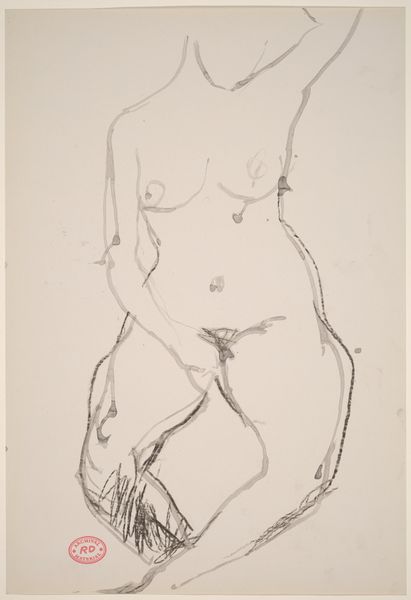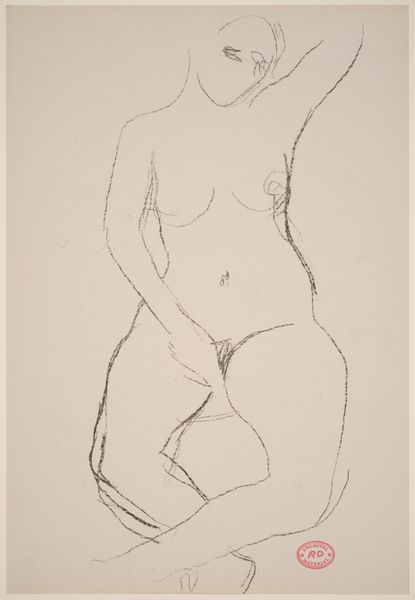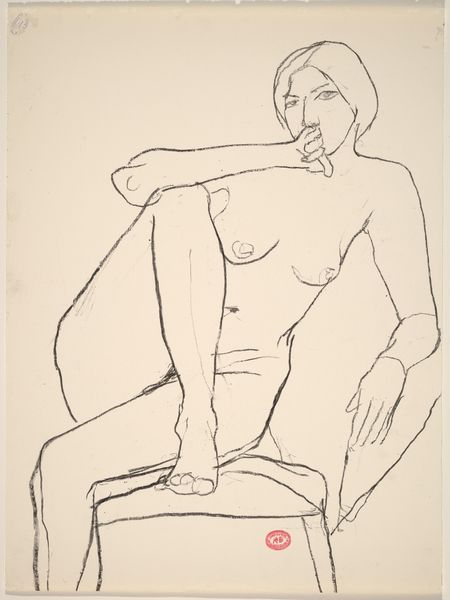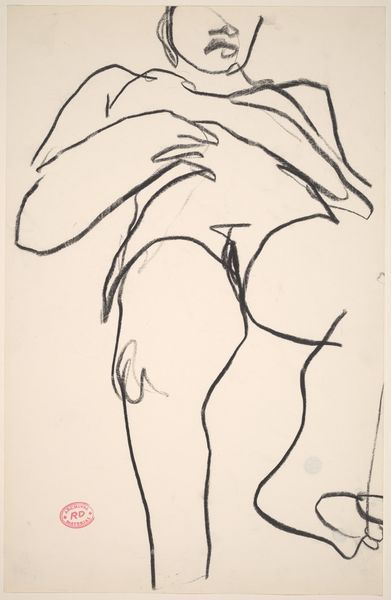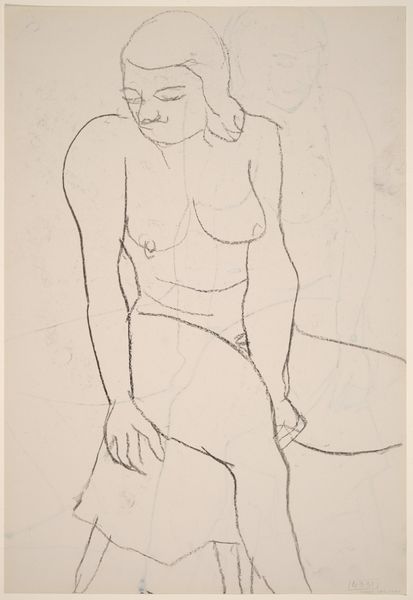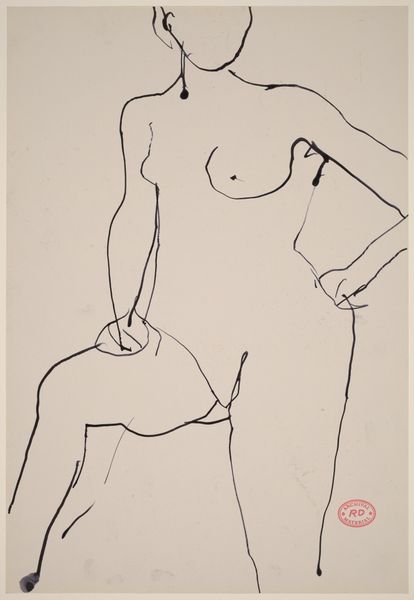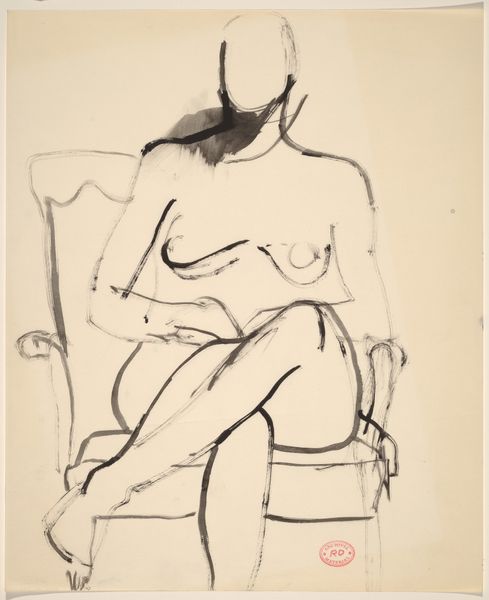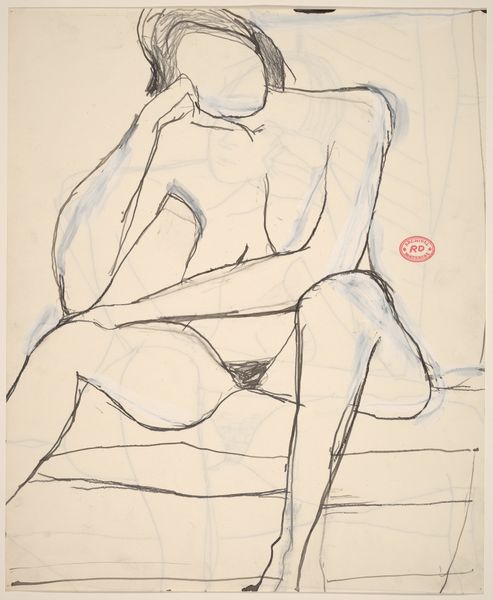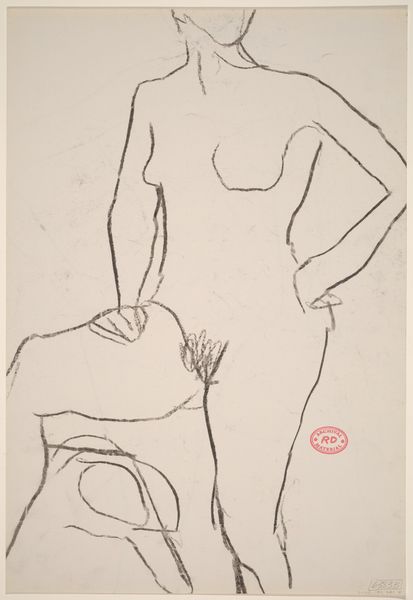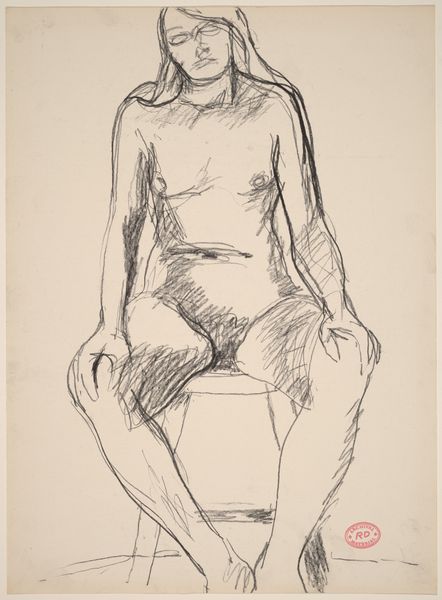![Untitled [seated nude with clasped hands leaning forward] by Richard Diebenkorn](/_next/image?url=https%3A%2F%2Fd2w8kbdekdi1gv.cloudfront.net%2FeyJidWNrZXQiOiAiYXJ0ZXJhLWltYWdlcy1idWNrZXQiLCAia2V5IjogImFydHdvcmtzLzgyYjJiZTRkLTE3NmQtNGIwYy05N2UwLWVmYjc0ZWI3YzNmOS84MmIyYmU0ZC0xNzZkLTRiMGMtOTdlMC1lZmI3NGViN2MzZjlfZnVsbC5qcGciLCAiZWRpdHMiOiB7InJlc2l6ZSI6IHsid2lkdGgiOiAxOTIwLCAiaGVpZ2h0IjogMTkyMCwgImZpdCI6ICJpbnNpZGUifX19&w=3840&q=75)
Untitled [seated nude with clasped hands leaning forward] 1955 - 1967
0:00
0:00
drawing, ink
#
drawing
#
ink drawing
#
figuration
#
bay-area-figurative-movement
#
ink
#
pencil drawing
#
portrait drawing
#
nude
#
modernism
Dimensions: sheet: 40.6 x 27.9 cm (16 x 11 in.)
Copyright: National Gallery of Art: CC0 1.0
Curator: I'm immediately drawn to the apparent discomfort conveyed in this image. The seated figure, almost hastily sketched in ink, seems to be holding herself tightly, clasped hands adding to that feeling. Editor: Indeed. This is an untitled ink drawing of a seated nude by Richard Diebenkorn, and it’s part of a series created between 1955 and 1967. While economical, his mark-making captures an introspective mood. Think about the artistic climate then; it's on the heels of abstract expressionism, and figuration is re-emerging, wrestling with representation. Curator: You know, I think this drawing challenges that very struggle. It reminds us that the body isn’t simply rendered; it's felt. Note how the ink application varies—thick lines define the contours, while softer strokes imply shadow and volume. What's remarkable to me is that Diebenkorn doesn't conceal the process; you see the immediacy of his hand. Editor: Absolutely, and the availability of the medium certainly impacted its proliferation! Ink, unlike oils, afforded the opportunity for immediate study. Moreover, consider the materials: paper and ink. Affordable, readily accessible...this suggests studies for larger paintings. The drawing, itself, is a testament to labor. Curator: True. Though it appears spontaneous, this likely wasn’t a fleeting sketch. The weight and sureness of line indicate a studied understanding of form. It’s a figure grappling with its own vulnerability, rendered during a pivotal point for gendered expectations in American society. Were images such as this shown, distributed, received, and experienced differently than images of men? What was Diebenkorn saying with this presentation? Editor: Such poignant thoughts, because each line communicates. In those confident strokes and stark use of materials, there's an interesting duality present, of fragility and also the inherent strength of surviving those introspective moments. Curator: The drawing holds an emotional honesty I appreciate. It reveals process and, perhaps unintentionally, cultural tensions that speak volumes. Editor: Agreed, this piece is not simply a study in form but rather of its unique historical circumstances and their ability to allow, impact, and create Diebenkorn's vision.
Comments
No comments
Be the first to comment and join the conversation on the ultimate creative platform.
